Today my post is dedicated to all book lovers out there! Bibliophiles will surely know that no amount of hashish can ever match the addiction that a book can offer. They keep their promise to take you on trips even when the world is locked. Bibliobibuli like me, who are constantly full of books, often wander through this maze of worlds in giant libraries, hearing and seeing nothing. Have you ever dreamed of waking up in the middle of the world's largest and oldest libraries, surrounded by nothing but books?
-
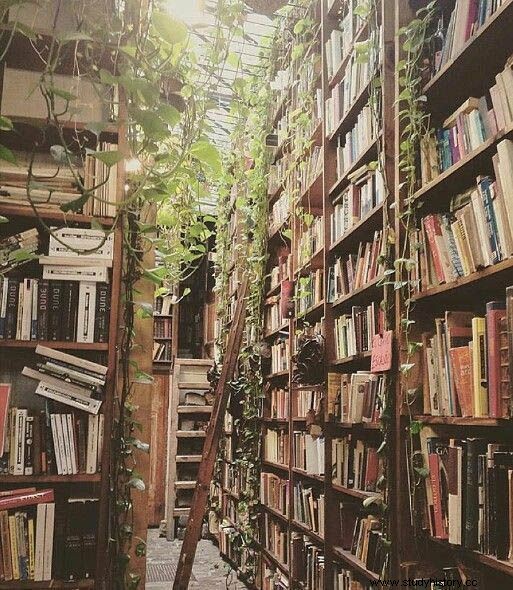
- Image:Pinterest
The idea of writing this popped into my head when I recently read about The Villa of the Papyri, well preserved under layers of solidified magma that erupted from Mount Vesuvius in 79 AD. It is not the largest library in antiquity, but it is the only Greco-Roman library that has survived with over 1000 papyrus scrolls. When I looked at the pictures, I was fascinated by the idea of old libraries. Who built them? What kind of books did they contain? How were the structures? The curiosity led me to find out more about such ancient temples of knowledge. Below is a list of some of the world's oldest libraries. Hope you enjoy reading about them.
The World's Oldest Libraries
-
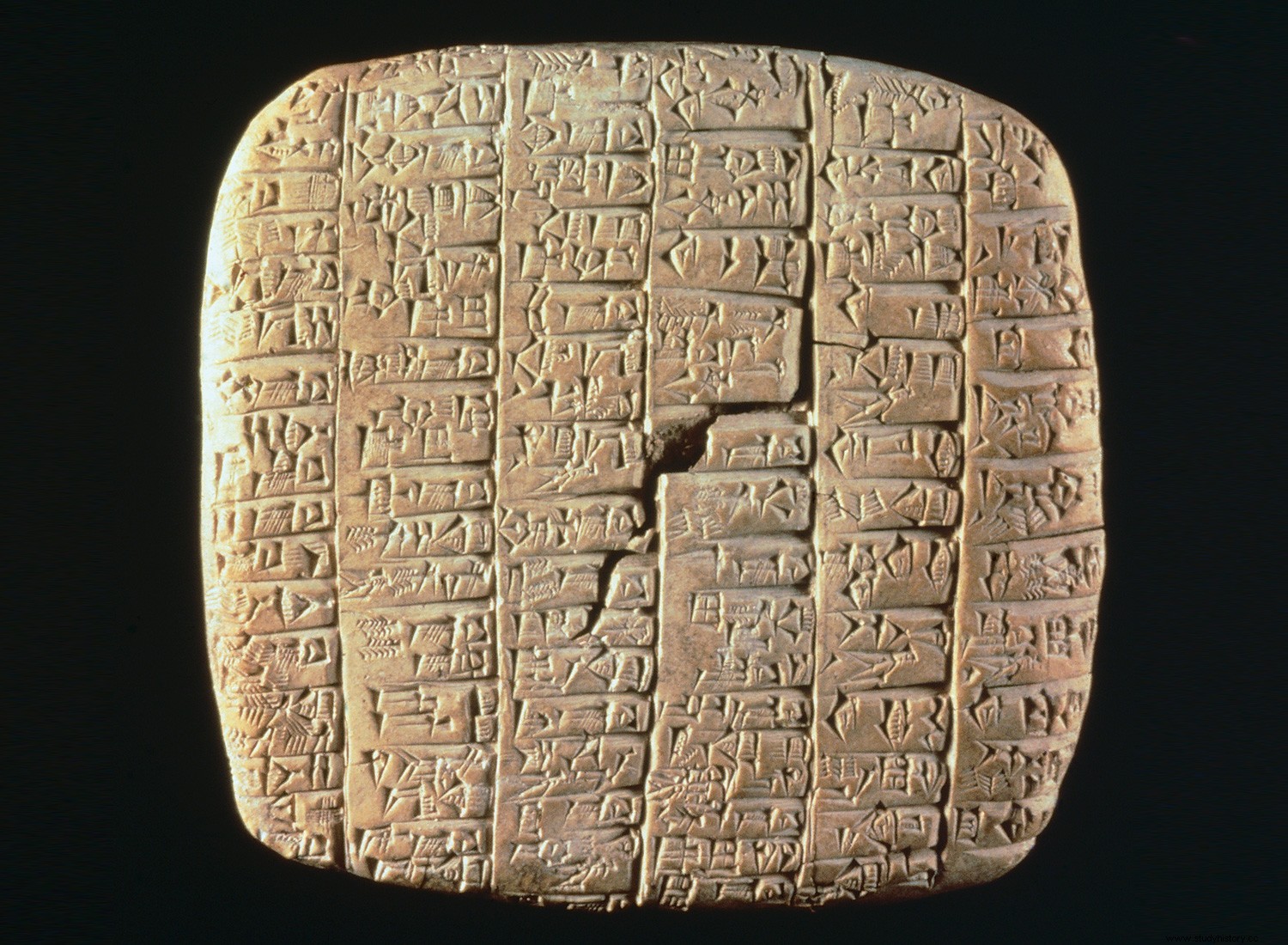
- Bookshelves by Ancient Ebla. Image:History Today
- Ebla Library (2500 - 2250 BCE)
The ruins of this royal library in the ancient kingdom of Ebla are located near Mardikh in Syria. It is not operational, but around 2000 clay tablets and around 4700 tablet fragments have survived. It was discovered around 1974-76 by Italian archaeologists from the University of Rome La Sapienza. Evidence suggests that these tablets were arranged intentionally and even professionally classified. Evidence also suggests early transcription of texts into foreign languages and scripts, categorization and cataloging for easier retrieval and arrangement by size, form and content.
Today, these tablets are held in museums in the Syrian cities of Aleppo, Damascus and Idlib. They provide a wealth of information about Syria and Canaan in the early Bronze Age. The contents of these tablets reveal that Ebla was a major trading center. They focused mainly on economic items, inventories that record Ebla's commercial and political connections with other Levantine cities, and logs of the city's import and export activities. The languages used are Sumerian and Eblaite (Sumerian logograms). You can read more about Ebla here. If you want to know more about these Sumerian tablets, you can watch this information video by Professor Nicholas Postgate, University of Cambridge. For a detailed video on the ancient kingdom of Ebla, watch this video.
- Ugaritic Library, Northern Syria. (1400-1200 BCE)
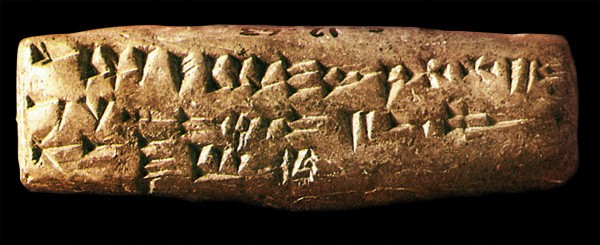
Archaeological evidence highlighting the existence of a rich literary heritage in Syria suggests the fact that ancient Syria was an important center for itself and not just a bridge between Mesopotamia and Egypt. The Ugaritic archives were discovered in 1929 and thousands of clay tablets were discovered. These findings revealed that there was not one, but several libraries at the time, including two private libraries that were unusual and largely unheard of around that time. One of them belonged to a diplomat named Rapanu. There was also a temple library and a palace library. The archives that were discovered dealt with all aspects of the city's political, social, economic and cultural life.
The ruins of Ugarit, today known as Ras Shamra, have managed to survive the erosion of time and fires to preserve these ancient texts, whose alphabet is today known to be the greatest contribution to the development of mankind. The Ugaritic alphabet was developed around 1400 BCE and consisted of 30 letters, each corresponding to sounds. Although the letters resembled other cuneiform characters, they were unique. The Ugaritic alphabet is considered to be the first alphabet in history. Learn more about the Ugaritic alphabet here. If you want to read more about Ugaritic, check out this blog.
- Royal Library of Ashurbanipal, Iraq (660 BCE)
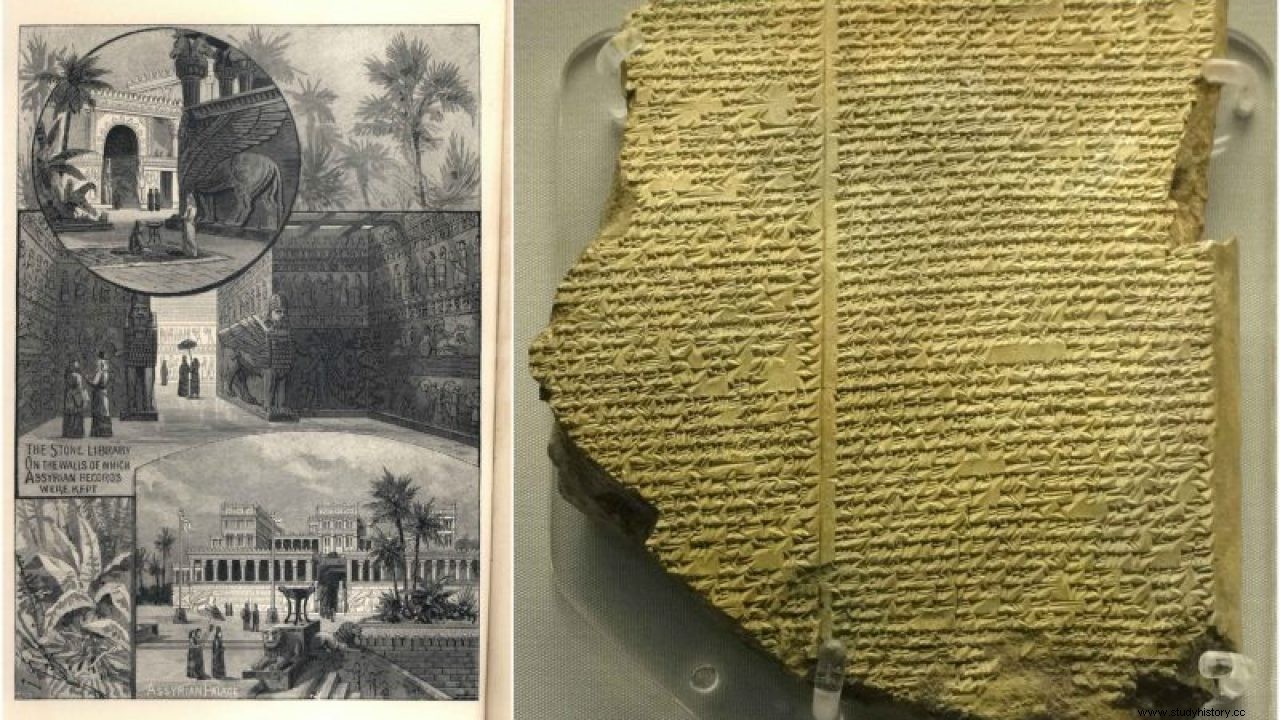
Named after Ashurbanipal, the last great king of the New Assyrian Empire, this library was formerly considered to be the oldest preserved ancient library in the world. Although it is currently in ruins, it has managed to preserve around 30,000 7 tablets from the XNUMX. century BC The most famous text - which has remained intact - from Ashurbanipal is the Gilgamesh epic. This tablet is considered the earliest preserved major work of literature. The English author HG Wells calls it "the most precious source of historical material in the world."
Discovered around the 1850s, the site is today near the city of Mosul in Iraq. However, the tablets and archives are present in the British Museum. The texts were mainly written in Akkadian in cuneiform. The tablets were often organized by shape:four-sided tablets were for financial transactions, while round tablets registered agricultural information. They have covered a wide range of topics, including medicine, mythology, magic, science, poetry and geography. The British Museum's collection database counts 30,943 XNUMX "tablets" throughout the Nineveh Library's collection, and the Trustees of the Museum proposes to issue an updated catalog as part of the Ashurbanipal Library Project. You may be able to take a virtual tour of the archives of the British Museum here ..
- Library of Alexandria, Alexandria, Egypt (300 BCE)
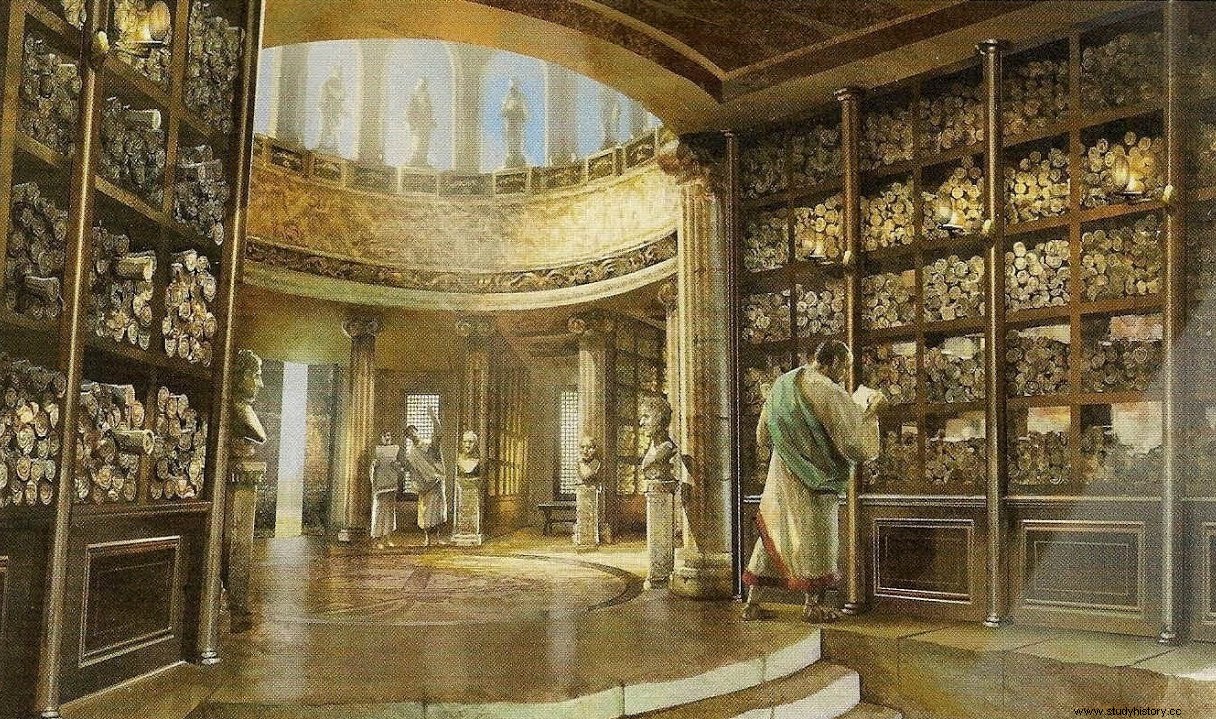
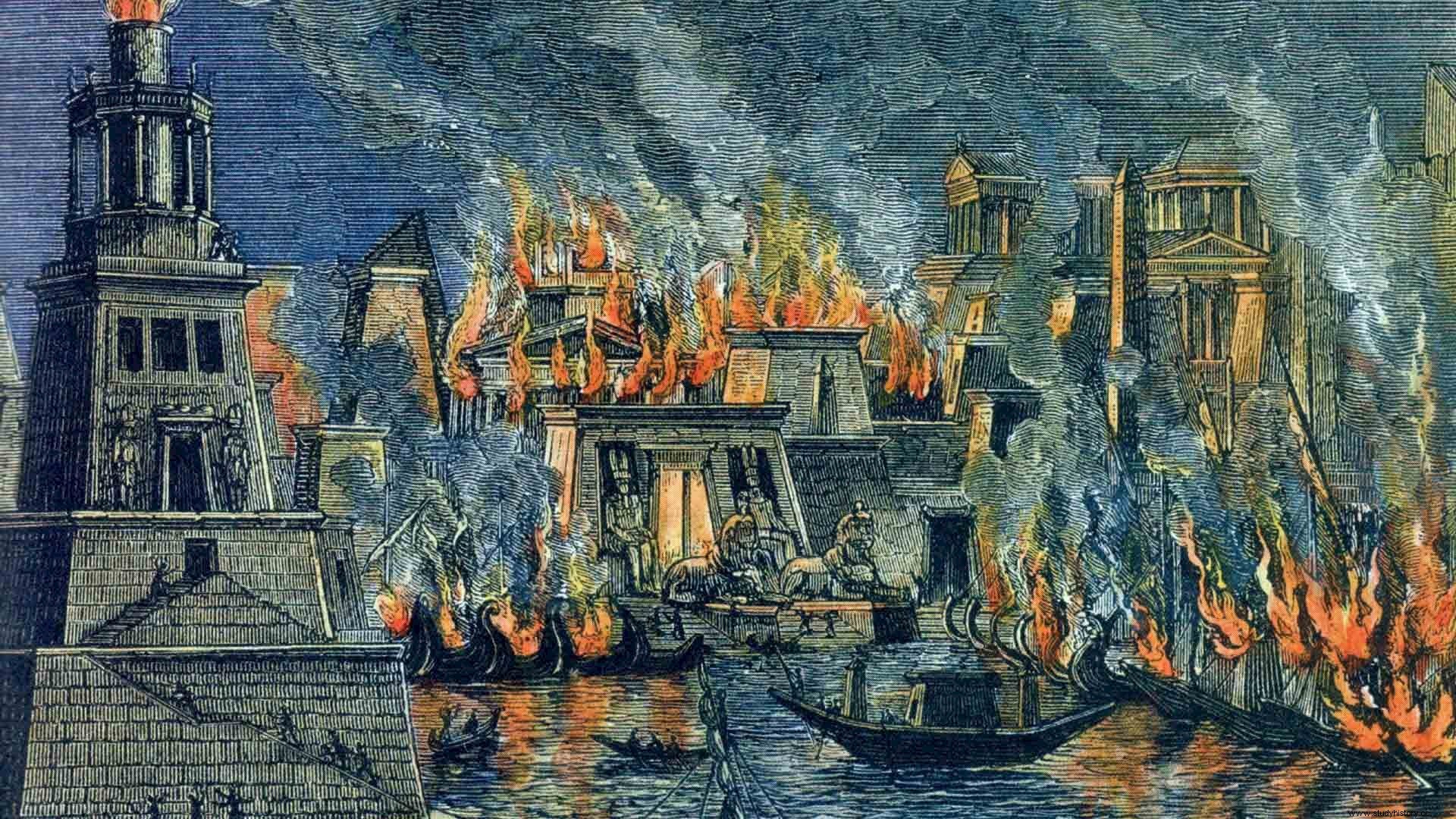
One of the most famous and largest libraries in the ancient world, it is a pity that nothing survives from it today. According to some, it was a dream project for Alexander the Great. which was apparently inspired by the Royal Library of Ashurbanipal. After his untimely death, his capable general Ptolemy built the great center of knowledge. According to others, the idea of a universal library in Alexandria may have been proposed by Demetrius of Phalerum, an exiled Athenian statesman living in Alexandria, to Ptolemy I. Whatever the story behind the creation, the library quickly acquired many papyrus scrolls, due to largely to the aggressive and well-funded policies of the Ptolemaic kings to obtain texts. It is unknown exactly how many such rolls were placed at any given time, but estimates range from 40,000 to 400,000 to XNUMX XNUMX in height.
Many influential scholars worked in the library over time. Some of the notable names include:"Zenodotus of Ephesus, who worked to standardize the texts of the Homeric poems; Aristophanes of Byzantium, who invented the system of Greek diacritics and was the first to divide poetic texts into lines; Callimachus, author of Pinakes, considered to be the world's first library catalog; Eratosthenes of Cyrene, who calculated the circumference of the earth within a few hundred kilometers accuracy; Apollonius of Rhodes, who composed the epic poem Argonautica; and Aristarchus of Samothrace, who produced the definitive texts of the Homeric poems and extensive comments to them. ” The library flourished until the Roman conquest of Egypt in 30 BC, and it was burned down and thousands of scrolls were lost.You can find out more about this ancient learning center here ..
- The Library of Pergamum, Turkey (197 BCE)
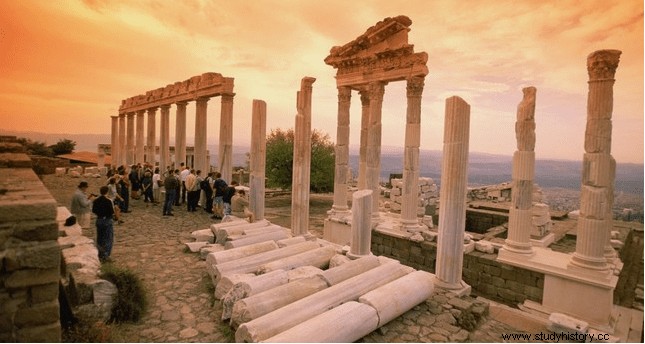
This ancient library was built by members of the Attalid dynasty, and was once home to a treasure chest of approximately 200,000 133 scrolls. Located in the temple of the Greek goddess Athena, this library matched those of the legendary library in Alexandria. It continued to flourish until 200,000 BCE when the kingdom of Pergamon fell to the Romans and the library was neglected. According to a legend popularized by Plutarch, Mark Antony seized the collection of 43 48 rolls and gave them as a gift to his new wife Cleopatra in XNUMX BC, apparently in an attempt to rebuild the library in Alexandria, which had become damaged during Julius Caesar's war in XNUMX BC. Wondering what the enmity between Romans and books is!
- Villa in Papyri, Italy
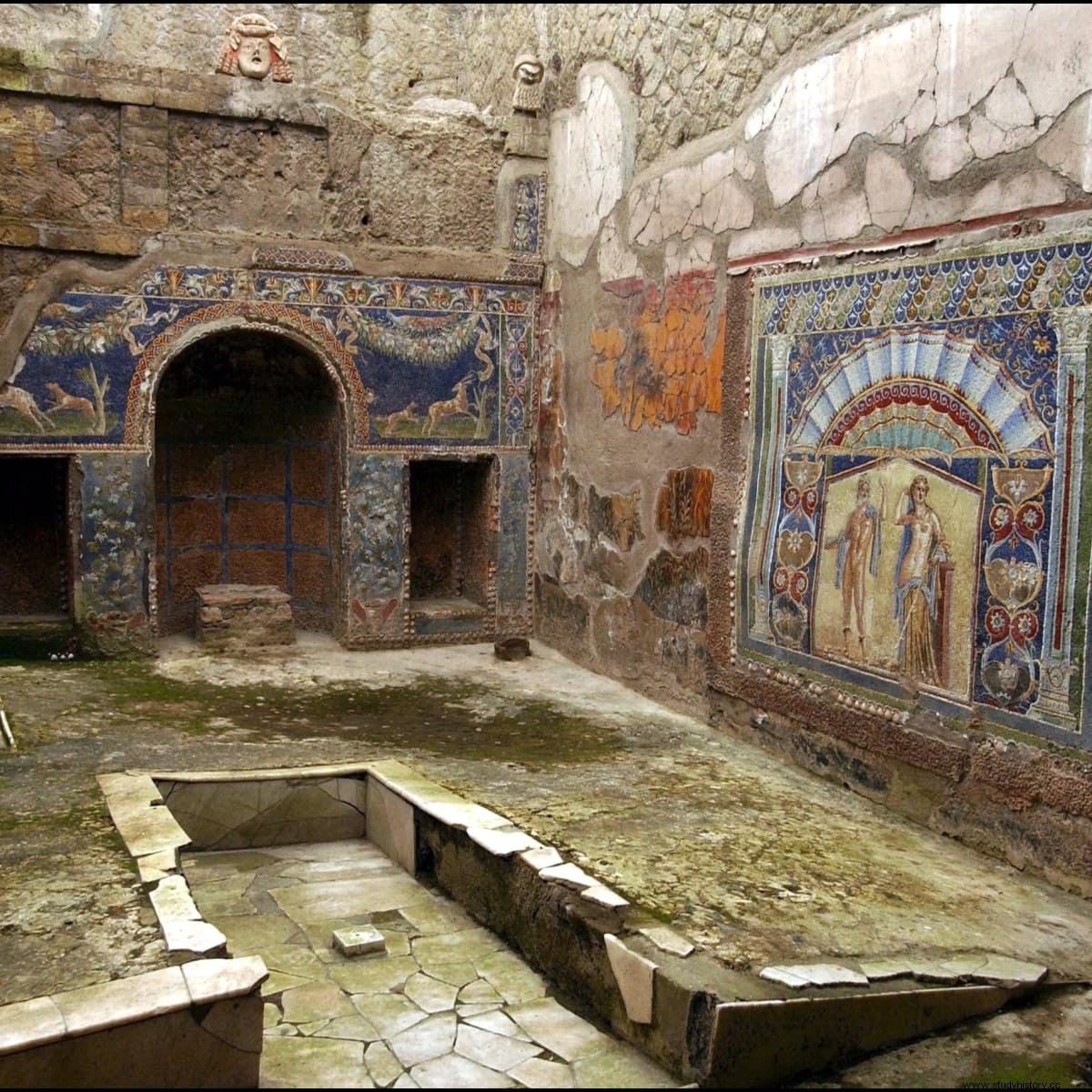
Located in the ancient Roman city of Herculaneum, this villa is named after its unique library of papyri (or scrolls), discovered in 1750. It was located on the ancient coastline below the volcano Vesuvius, without obstructing the view of the sea. It was probably owned by Julius Caesar's father-in-law, Lucius Calpurnius. According to a few, Philodemus, a Syrian poet, may have been the owner. In 79 AD, with the eruption of Mt Vesuvius, the city of Herculaneum was immersed in volcanic material from pyroclastic currents. In the 1750s, during the excavation, the library was discovered and it contained over 1,800 papyrus scrolls, now carbonized by the heat of the eruption, "Herculaneum papyri". Many of the finds are on display in the National Archaeological Museum of Naples. Getty Villa is a reproduction of Villa of the Papyri. Find out more about Herculaneum papyri here ..
- The Imperial Library of Constantinople, Turkey (330-360 AD)
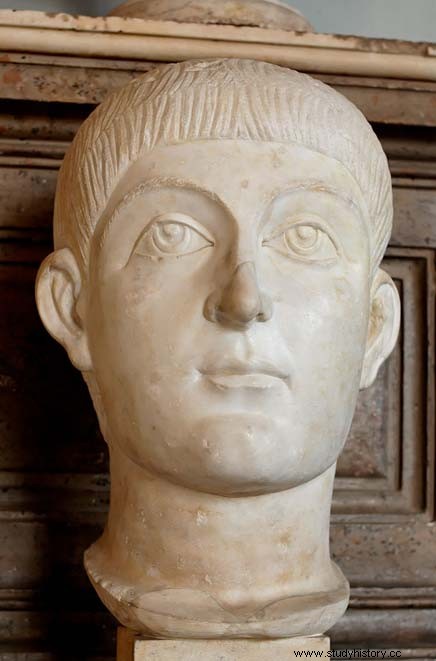
It was a wonderful library in the Byzantine Empire. Founded by Constantius II, it was the last major library in the ancient world. He established the library to preserve the remaining works of Greek literature. The library also includes the remains of the library in Alexandria. After Constantius II, Emperor Valentine hired calligraphers to make copies of Greek works on parchment, which lasted longer than papyrus. Almost all of the Greek classics known today are from the Byzantine copies of the Imperial Library in Constantinople. Unfortunately, there is not much left today when it was destroyed in 1204. The fall of Constantinople, lack of maintenance, several fires, etc. were causes that led to the destruction. Although most of the manuscripts have been destroyed, some survived and were recovered.
- Saint Catherine's Monastery Library, Sinai, Egypt (550–565 AD)
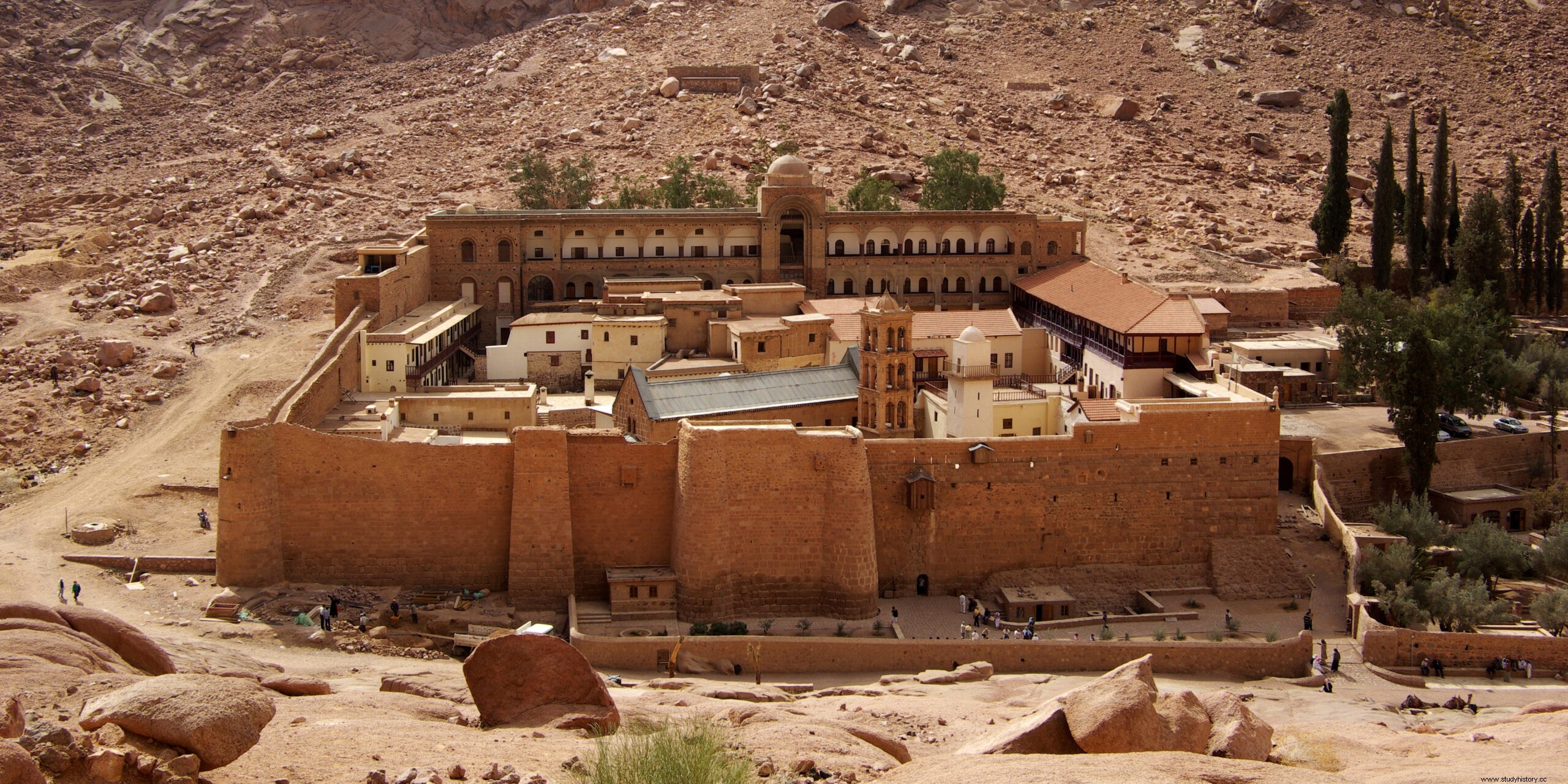
Located at the foot of Mt Sinai, it is the oldest operating library in the world. Saint Catherine's Monastery Library is also the oldest functioning Christian monastery in the world. It is a UNESCO World Heritage Site. Due to its age and significance in the Christian world, the monastery's library has the second largest collection of ancient manuscripts and codes. when it comes to unification, it is only second only to the Vatican City State. Among the thousands of ancient parchments are at least 160 palimpsesters - manuscripts that have faint scratches and ink stains under newer writing. You can find out more about it here ..
- House of Wisdom, Baghdad, Iraq (750-780 AD)
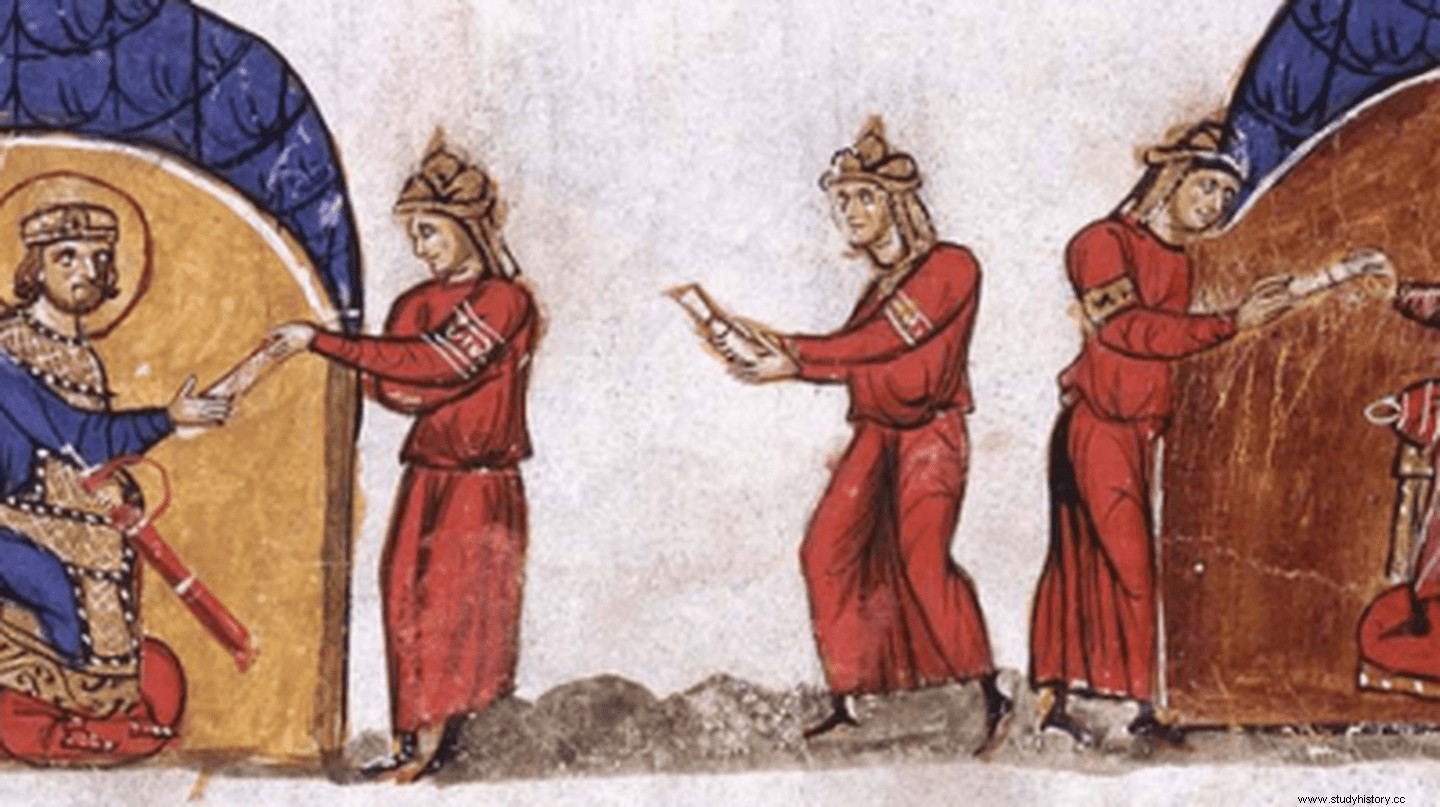
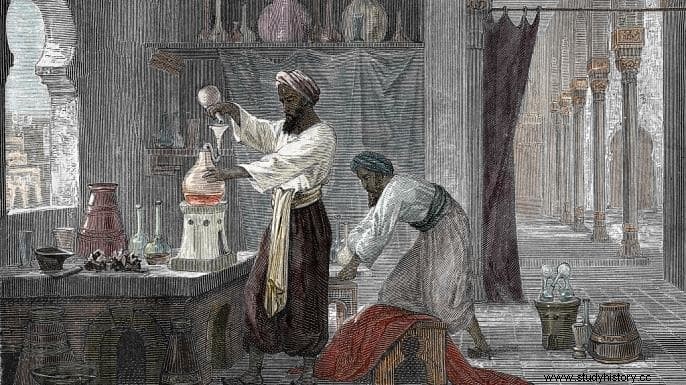
Baghdad was a major center of learning and culture, and the House of Wisdom was an integral part of this cultural center. It was established during the Abbasid reign, and was centered around a vast library of Persian, Indian, and Greek manuscripts on mathematics, astronomy, science, medicine, and philosophy. The House of Wisdom stood as the intellectual nerve center of the Islamic world for hundreds of years, but it later met with a gloomy end in 1258, when the Mongols plundered Baghdad. According to folklore, so many books were thrown into the Tigris River that the water turned black with ink. Those interested can watch this documentary about the House of Wisdom.
- Al-Qarawiyyin Library, Morocco (859 AD)
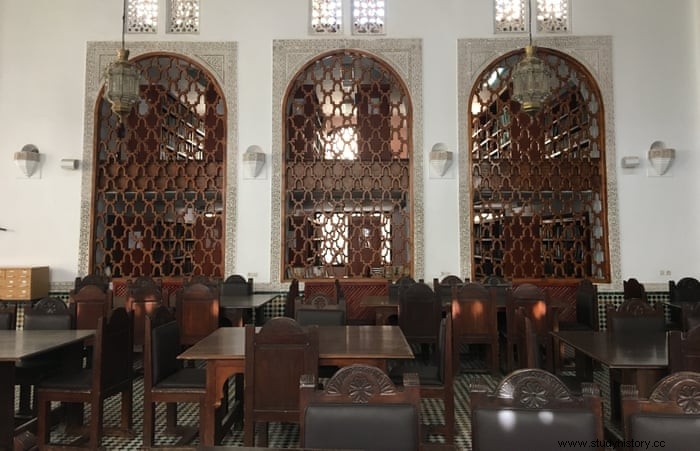
This old one is very operational and a major tourist attraction in Morocco. Al-Qarawiyyin is often believed to be the oldest operating library in the world. It is part of one of the oldest universities in the world, founded by a woman named Fatima al-Fihri, the daughter of a wealthy Tunisian merchant. For several decades, the library had been closed to the public except for a few researchers. After the renovation, however, the government considered it appropriate to be open to the public in 2017 and beyond. You can read more about it here. and here .. Check out this video on it here ..
- The Librije, The Netherlands (16th Century)
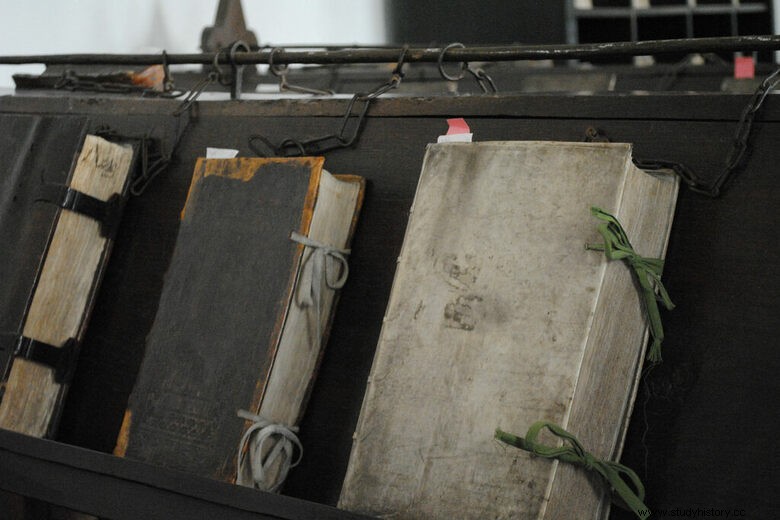
Located in St. Walburga's Church in the Gelderland province of the Netherlands. The church is a relic in itself. The church itself dates back to the 11th century, and librije is a relic from the 16th century. The library's interior and exterior have remained almost unchanged. Today, much of the book collection is still linked to reading desks.
- Hereford Cathedral Library, England (11th century)
Home to a large and diverse book collection, it also contains some of the finest examples of ancient manuscript. It is the only chained library that has all the chains, rods and locks still intact. The library is also home to a preserved antiphon from the 13th century and has an old oak relic.
- Laurentian Library, Florence, Italy (1571)
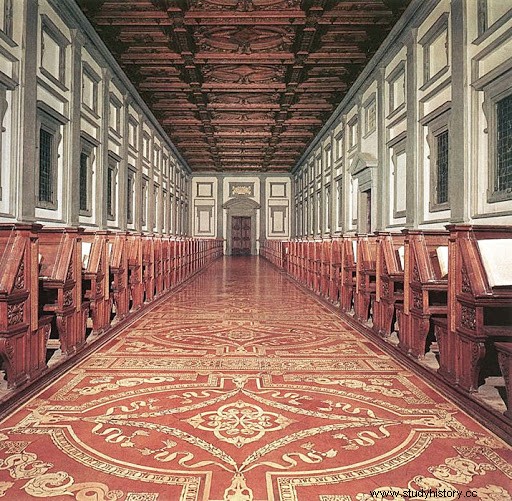
The Laurentian Library is housed in an arcade in the Medicean Basilica di San Lorenzo di Firenze. Today it has more than 11,000 5,000 manuscripts and almost XNUMX XNUMX books. According to the official website:"It includes the most enduring cultural heritage that the Medici family has passed on to posterity's attention, care and admiration." Read about the library's history with the Italian banking family and Michelangelo's involvement in the design.
The list above was mainly focused on the old libraries, and although I have been to a few medieval and modern establishments, it is just the tip of the iceberg. I would definitely follow up with a detailed post about some of the most beautiful modern libraries where you can actually linger around and lose yourself among the immortal souls.
Until then, here's another great read about the great old treasures from some of these ancient libraries, including the Codex Sinaiticus, a handwritten version of a Greek Bible, and the oldest version of the complete New Testament. Happy Epeolatry, Scrollmates !!
